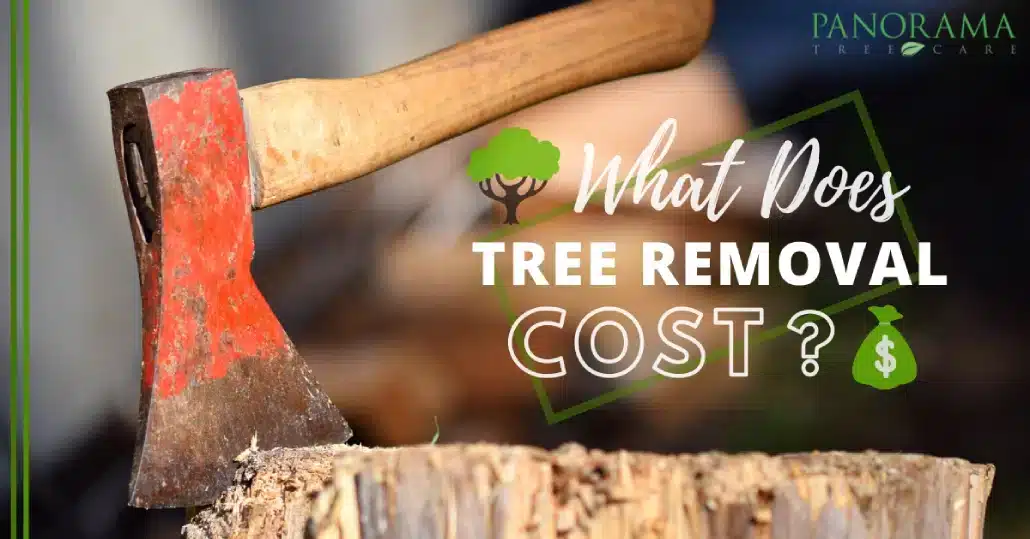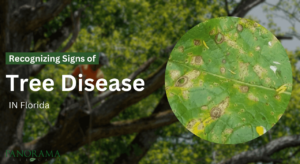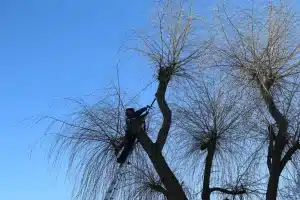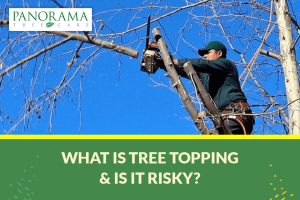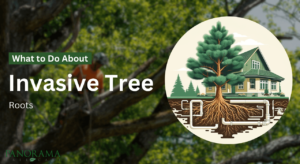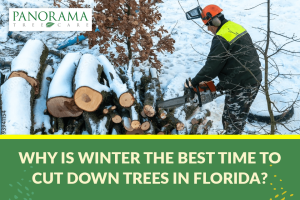In Tampa, where the landscape is adorned with a variety of trees, the need for tree removal is sometimes a necessary measure for safety and property maintenance.
Whether due to disease, storm damage, or landscaping changes, removing a tree can significantly impact your property’s safety and aesthetics.
This guide aims to highlight the factors influencing the cost of tree removal in Tampa, ensuring homeowners are well-prepared for this undertaking.
Factors Influencing Tree Removal Costs
When we talk about the factors influencing the cost of tree removal, the size and type of the tree in question are among the most significant.
Tree Size
The size of a tree is a straightforward yet critical determinant of the removal cost. This is because the larger the tree, the more complex the removal process becomes.
Large trees have extensive root systems that need careful handling to avoid damage to surrounding property, underground utilities, and the landscape.
Additionally, taller trees require specialized equipment, such as cranes or high-reach lifts to safely cut and lower large branches to the ground.
This equipment, along with the need for a larger crew to manage the removal safely, contributes to the higher cost.
For instance, a small tree, which we might define as being up to 30 feet tall, could be removed with basic equipment and a smaller team, leading to costs in the range of $100 to $500.
On the other hand, a large tree, perhaps over 60 feet tall, demands more sophisticated removal techniques, more manpower, and consequently, a higher price tag, potentially reaching up to $1800 or more.
Tree Type
The species of the tree also plays a crucial role in determining the removal cost. Different trees have varying structures, wood densities, and root systems, all of which affect the removal process.
For example, palm trees, a common sight in Tampa, have a different structure compared to oaks or pines.
Palms typically have a single, straight trunk and a relatively simple root system, making them easier and less costly to remove.
Conversely, oak trees are known for their hard, dense wood and extensive root systems. This makes them more challenging to cut and remove, increasing the time, labor, and equipment needed for the job.
Similarly, pine trees, which can grow very tall and have long, deep root systems, may also be more expensive to remove due to the complexity of the task.
The type of tree also influences the potential for reuse or disposal of the wood, which can affect the cost.
Some wood types are more valuable and can be sold or used, potentially offsetting some of the removal costs, while others may incur additional disposal fees.
Examples of Common Tree Types in Tampa and Their Average Removal Costs
- Palm Trees: Given their simpler structure, the cost to remove a palm tree can be on the lower end of the spectrum, typically ranging from $200 to $900, depending on the size and location.
- Oak Trees: Oaks are more challenging due to their size, wood density, and root complexity. Removal costs can range from $400 to over $1000.
- Pine Trees: Tall and with deep roots, pine trees can be expensive to remove, with costs ranging from $500 to $1500 or more, based on height and accessibility.
The location and accessibility of a tree within your property significantly impact the process and overall cost of removal.
Let’s break down why this is and what it entails for homeowners in Tampa or elsewhere considering tree removal.
Tree Location and Accessibility
The location and accessibility of a tree within your property significantly impact the process and overall cost of removal.
Proximity to Structures and Utilities
Trees that are close to your home, other buildings, or utilities such as power lines pose additional risks and challenges during removal.
The primary concern here is safety – ensuring that neither the structure nor the utility lines are damaged in the process.
This often requires the tree removal team to use more precise and controlled methods to dismantle the tree piece by piece, rather than cutting it down in large sections.
Such precision work is slower and requires specialized equipment and expertise, all of which contribute to a higher cost.
For example, a tree that’s entangled in power lines or leaning dangerously close to a house must be carefully trimmed limb by limb to prevent any branches from falling onto the lines or the roof.
This meticulous process demands not only skilled arborists but also, in some cases, coordination with utility companies to temporarily disconnect power lines, further adding to the complexity and cost.
Accessibility Challenges
The ease with which a removal team can access the tree also plays a significant role in determining the cost.
Trees located in hard-to-reach areas, such as behind buildings, near fences, or in narrow spaces between properties, are more challenging and time-consuming to remove.
The removal team may need to use smaller, more maneuverable equipment or even manually carry tools and debris to and from the site, increasing labor time and costs.
Steep terrain presents its own set of challenges, as it complicates the safe operation of equipment and the movement of the crew.
Working on a slope requires additional safety measures to prevent accidents and ensure the controlled descent of cut tree parts.
This can slow down the removal process and necessitate specialized rigging or equipment, further driving up the cost.
Cost Implications
The additional labor, time, and equipment required to safely remove a tree in a challenging location can significantly increase the overall cost.
For trees near buildings or utilities, the cost can be higher due to the need for precision cutting and possibly coordinating with utility companies.
For trees in hard-to-reach areas or on steep terrain, the increased labor and specialized equipment or techniques required can also add to the expense.
Stump Removal and Grinding
Stump removal and grinding are crucial final steps in the tree removal process, addressing the remnants left behind after a tree has been cut down.
These steps are not just about aesthetics; they play significant roles in ensuring safety, preventing pest infestations, and facilitating the use of the land post-removal.
The Importance of Stump Removal and Grinding
Safety and Aesthetics: Stumps can be hazardous, posing tripping risks, especially in areas frequented by people. They can also detract from the overall appearance of your property, making it look unkempt or neglected.
Pest Prevention: Tree stumps can attract insects and other pests. Termites, ants, and beetles might find a home in a decaying stump, potentially spreading to other plants or even buildings nearby.
Land Use: Removing a stump can free up space, allowing for new landscaping opportunities, planting of new trees, or other uses of the land that a stump would otherwise obstruct.
Cost Factors
The cost of stump removal or grinding can vary widely, influenced by several factors:
- Stump Size: Larger stumps require more time and effort to remove or grind down, directly impacting the cost. The diameter and height of the stump are the primary size considerations.
- Stump Age and Wood Hardness: Older, more decayed stumps are typically easier and cheaper to remove or grind than fresh, hard wood stumps. Similarly, the wood’s hardness varies by species, affecting the difficulty of the job.
- Location and Accessibility: Stumps located in hard-to-reach areas or close to structures may require special equipment or techniques to remove or grind, potentially increasing the cost.
- Root System: The complexity of the stump’s root system can affect the choice between removal and grinding. Extensive root systems may complicate removal and increase costs.
In Tampa, the average cost for stump removal and grinding services ranges from $60 to $350.
This range accounts for the various factors mentioned, with smaller, easier-to-access stumps on the lower end of the cost spectrum and larger, more complex jobs on the higher end.
Choosing Panorama Tree Care
Panorama Tree Care stands out as a trusted choice for tree removal services in Tampa, offering a combination of licensing, insurance, extensive experience, and a commitment to safety and customer satisfaction.
By choosing a company like us, you can ensure that your tree removal needs are addressed by professionals who prioritize the health of your landscape and the safety of your property.
Conclusion
Understanding the key factors that influence tree removal costs in Tampa is crucial for homeowners planning this significant task.
From the tree’s size and type to the location, accessibility, and additional services required, several elements can impact the overall cost.
By prioritizing safety and seeking professional help for complex or hazardous tree removals, homeowners can ensure a smooth and successful process.
Remember, investing in professional tree removal services not only protects your property but also preserves the beauty and health of your landscape.

